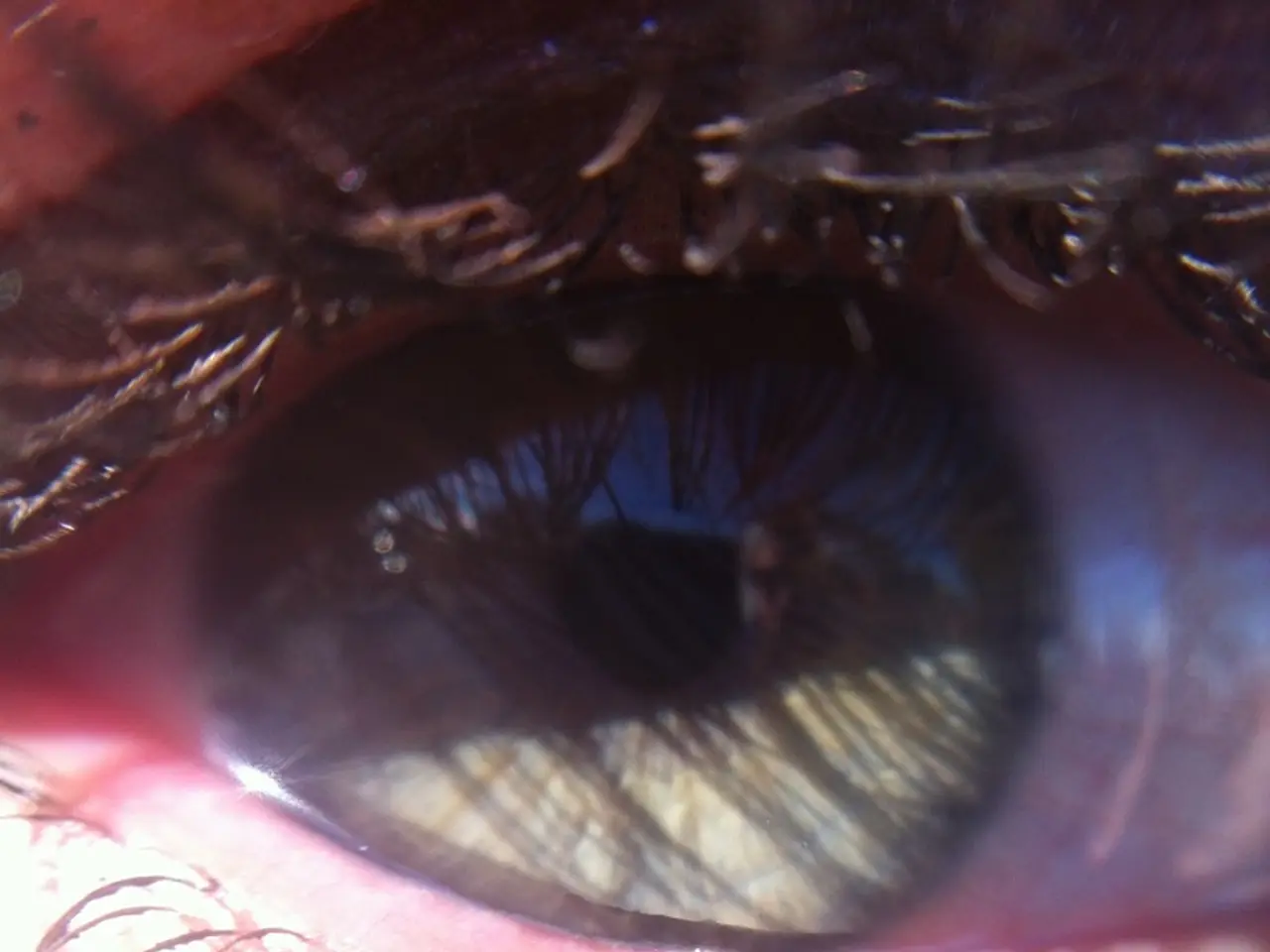Eye Color Variations: Origin and Classification (Central Heterochromia)
Heterochromia, a fascinating condition that causes a difference in eye color, affects less than 200,000 people in the United States. This intriguing phenomenon, known as heterochromia iridis or heterochromia iridum, can be genetic or acquired, with the former often present at birth and the latter developing later in life due to various factors.
The term "heterochromia" is derived from ancient Greek, where "heteros" means different and "chroma" means color. In the context of human eyes, it signifies the presence of two different colored eyes or color differences within one or both eyes.
Genetic heterochromia, the most common form, is primarily caused by variations or mutations in the genes that regulate the production and distribution of melanin, the pigment responsible for eye color. This uneven distribution of melanin can lead to distinct eye colors, often appearing at birth or very early in development due to small changes in the cells forming the iris.
On the other hand, acquired heterochromia develops later in life and can be triggered by injury, certain diseases, or health conditions that affect pigment production or distribution in one eye. Environmental factors or trauma can lead to changes in the melanin content of the iris, causing one eye or part of an eye to change color differently from the other.
Identifying heterochromia is straightforward. It involves a person having two different colored eyes or color differences within one or both eyes. Color differences may be slight and may only become apparent under certain lighting conditions or in photographs. Central heterochromia, for instance, often exhibits "spikes" of different colors radiating from the pupil, resembling "cat eyes."
Central heterochromia, also known as partial heterochromia, presents as one part of the iris being a different color from the rest. Celebrities like Kate Bosworth, Henry Cavill, and Elizabeth Berkley are among those affected by sectoral heterochromia. Notable people with central heterochromia include Olivia Wilde, Idina Menzel, and Christopher Walken.
While heterochromia is generally benign and does not require treatment, it is essential to consult an eye doctor, especially if the condition is acquired or if there are noticeable changes in eye color. An eye examination will usually be necessary, and other tests, including blood tests and chromosome studies, may be needed to rule out other medical conditions.
In summary, heterochromia is a fascinating condition that can be both genetic and acquired. It is caused by variations or imbalances in the concentration and distribution of melanin, the pigment responsible for eye color. While it is generally harmless, it is always advisable to consult an eye doctor if you notice any changes in your eye color or if you have heterochromia.
- The study of heterochromia might lead to insights about other genetic medical-conditions, such as diabetes or bipolar, as they also involve variations in gene expression.
- In the realm of science, understanding the development of genetic heterochromia could potentially aid in the predictive diagnosis of certain conditions, like obesity or type 2 diabetes, which have genetic components.
- Obesity, depression, colitis, COPD, ulcerative colitis, and asthma are all medical-conditions that require careful management, and maintaining a health-and-wellness regime, including fitness-and-exercise, nutrition, and skin-care, can significantly contribute to their control.
- People with heterochromia may find it intriguing to explore the connection between this eye-health condition and their overall health, looking for fluctuations in mental-health, diabetes, or even chronic skin conditions like psoriasis.
- As research progresses, the science of heterochromia may provide valuable insights into various medical-conditions and maintain the focus on health-and-wellness, including eye-health, mental-health, and skin-care alike.
- For those diagnosed with acquired heterochromia, being aware of other health-and-wellness aspects like diabetes, depression, and bipolar is essential, as these conditions might share similar underlying mechanisms.
- Psoriasis, diabetes, bipolar, and other mental-health conditions, such as depression, can all affect the quality of one's life, and adopting a balanced fitness-and-exercise routine, maintaining proper nutrition, and practicing good skin-care can contribute to their management.
- An eye-health condition like heterochromia can serve as a reminder to prioritize health-and-wellness in all its forms, promoting fitness-and-exercise, proper nutrition, adequate sleep, and mental-health awareness.
- Aside from its role in monitoring possible medical-conditions like diabetes or obesity, heterochromia can also be a fascinating subject in various scientific disciplines, including genetics, biology, and medical-research.
- While heterochromia is usually a harmless and intriguing condition, it's essential to keep an eye on other health-and-wellness aspects like mental-health, diabetes, or skin-care, especially if any changes occur in one's eyes or other parts of the body.




